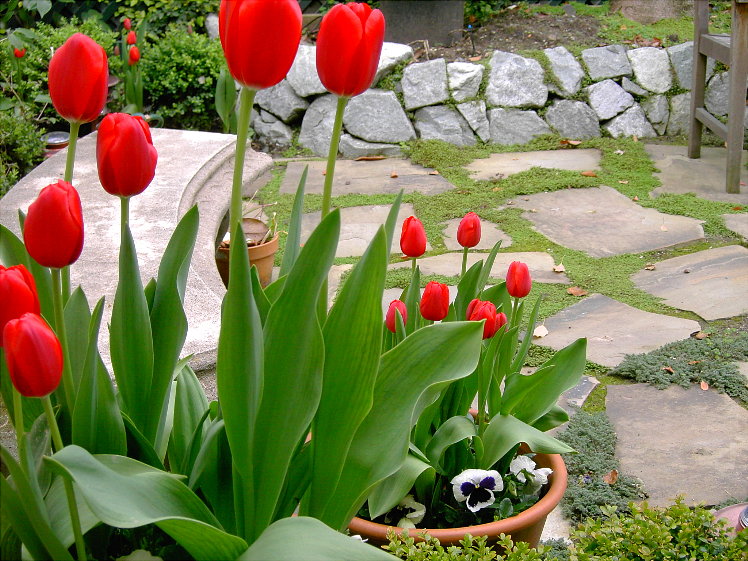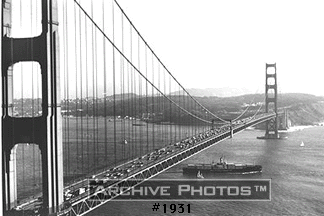|
The Peninsula's Residential & Income Property Resource |
|||
|
|
Burlingame Active Listings Burlingame 2016 Sold Listings Burlingame Facts-History History |
||

|
Burlingame has always been more than just another suburb built along the railroad tracks south of San Francisco. It is a town that has traditionally been known for its aristocratic tone. Even the name has flair. It was named for Anson Burlingame, a 19th-century American politician and diplomat. In 1866, on a brief visit to San Francisco, he purchased land on the Peninsula before continuing his travels. Burlingame never returned. In 1870, while in Russia, he became ill and subsequently died. There was never a Burlingame estate or house. Only his name remained. In 1893, founding members of a newly established country club took Burlingame as its name. The town soon followed. Largely protected by hills from the strong winds and heavy fogs that often swept in from the Pacific, town pioneers nestled their community between the hills and the quiet waters of San Francisco Bay. Boosters like to advertise the town as “San Francisco’s Sunshine Suburb.” The ample numbers of Indian relics and even the fossilized remains of prehistoric elephants and horses dating from the Pleistocene era, which over the years have been uncovered by builders, provided ongoing testimony to the long-term desirability of the area. Ohlone Indian shell mounds, some of them six feet in height, covered numerous half-acre expanses. Scotsman William Corbitt, a wealthy coffee merchant who acquitted 440 acres of Burlingame during the early 1870’s, probably was the area’s first full-time resident. Corbitt discovered that the Peninsula climate was perhaps the most ideal in the world for the breeding of fine horses. On land where Burlingame High School would later rise, Corbitt built a model-breeding farm, transforming it into an equine paradise. Visitors marveled at its cleanliness as well as the meticulously built paddocks, barns and stables. Workers sprinkled and rolled his racing oval daily. Before his death in 1898, Corbitt had achieved a worldwide reputation and shared the honor with the late Senator Leland Stanford of having bred the greatest number of champion trotters in America. A town did not really begin to develop until the Burlingame Country Club was established in 1893. With the opening of a depot in 1894, trains regularly stopped there. A decade later, completion of an electric trolley line from San Francisco to San Mateo provided a major impetus to town growth. Nevertheless, as late as 1906 when the great California earthquake fractured San Francisco, Burlingame’s population still hovered around several hundred. Of the steady stream of refugees escaping the burning city, many found sanctuary in Burlingame. This was no accident. For Burlingame development, the earthquake was to prove fortuitous. As early as 1895, pioneer landowner William Henry Howard, whose property extended south of Burlingame Avenue and had been retained by Ansel Mills Easton to lay out a new town along the trolley line. The town of Easton developed around a thoroughfare named Buri Buri (a name derived from an early Mexican rancho). Easton became part of Burlingame in 1910. The enormous economic potential of the budding town wasn’t lost on wealthy aristocratic residents, “hill people”, as they were known, who, since the early 1890’s, had been erecting lavish mansions with palatial gardens around the country club west of County Road. Not until 1910 did this group separate to form the town of Hillsborough. Dean of that millionaire hill society was much respected Henry T. Scott. He was president of San Francisco’s powerful Union Iron Works, the first company in the West to receive contracts to build United States ships of war. In 1903, Scott, with his associates William H. Crocker, Francisco Carolan, William S. Tevis, Joseph Grant and George Pope, acquired a portion of the former William Corbitt property where they proceeded to lay out housing plots and announce plans to construct 40 homes. Thus, in 1906, following the earthquake, no town was better prepared nor more enthusiastic about receiving refugees than Burlingame. From a picturesque tiny hamlet, Burlingame rapidly developed into an ideal suburban city. It became an incorporated town in May 1908. Because of its closeness to San Francisco, Burlingame was thought of as a commuters’ paradise. By 1916 when population had expanded to 4,209, the Chamber of Commerce, a group that was informally organized in 1913, proudly noted that more daily commuters boarded trains, streetcars and buses in Burlingame than in any other city of the Peninsula. Town boosters boasted about cozy modern bungalows tastefully intermixed with stately beautiful mansions reminiscent of an Old World culture. Visitors commented on the unique preservation of the natural artistic simplicity of the hills, fields and trees. Town trustees looked askance on homeowners who didn’t keep their property quite tidy enough. Shortly after incorporation, City Hall warned property owners to keep weeds under control. Homeowners had until the end of April each year to pull weeds. Thereafter, town Marshal George E. Jones announced that city workers would do the weeding and the residents charged. Liens were placed against properties of those who neglected to pay. But from the outset, Burlingame was more than a bedroom community. Private businesses boomed. By the mid-1920’s, the town had two excellent banks and more than a dozen automobile agencies. Town fathers proudly laid claim to have the Peninsula’s first “auto row”. There were 35 real estate, lending agencies and insurance firms. Workers engaged in a myriad of building projects. In June 1924, 17 stores were under construction simultaneously and approval had been reached for 11 more buildings to start almost immediately. Residents cherished Burlingame’s woodsy ambience. When William Corbitt began building his stock farm in the 1870’s, the region comprised an uninteresting, windswept prairie. Under the watchful gaze of wealthy landowners the ilk of Ralston, Mills, Sharon, Howard, Corbitt and Easton, trees of many varieties were planted. Within a few years, winds were harnessed and dramatic changes took place in the appearance of the terrain. Burlingame had begun to assume a distinctive personality. Town trustees and residents alike recognized the value of the foliate. In 1910, while other Peninsula communities were beginning to regard trees as attractive nuisances and ridding their streets of them, in Burlingame, whenever cutting could possibly be avoided, trustees denied permission to even trim street trees. Tree-lined boulevards became a town characteristic. During the early years, Burlingame Avenue, Broadway and even the railroad tracks were lined with trees. Perhaps most famed were the great trees along County Road where Scots landscape gardener John McLaren had interspersed elms with fast growing eucalyptus. Burlingame residents came to revere these Australian gums. They rose in righteousness wrath at the merest hint that their trees might be molested. In 1913, when a proposal was made to cut trees along County Road, the Burlingame mayor promised that anyone caught doing so would be arrested. By the 1990’s, most townsfolk recognized that the fast-growing trees were responsible for breaking sidewalks, cracking pavement and creating hazards to homes and people by randomly dropping branches and bark. Nevertheless, citizens again banded together to prevent removal. The towering eucalyptus had unquestionably come to be regarded as the “soul of the city.” Readers may well encounter confusion about street names. Burlingame street names may have changed over the years. Once upon a time El Camino Real was simply known as County Road; later it was referred to as the State Highway. One main thoroughfare, San Mateo Drive, was officially changed in the mid-1920’s to California Drive. And although Burlingame Avenue has always been such officially, previously was also known as Corbitt Lane, Donnelly Lane and MacMonagle Lane. (Dr. B. MacMonagle was a son-in-law of William Corbitt.) By the early years of the 20th century, it was most commonly referred to simply as “the Avenue”. Main Street ran north of Burlingame Avenue. South of Burlingame Avenue it was called Middlefield Road. In January 1925, to avoid confusion, Sam Merk, editor of the Burlingame Advance, asked town trustees to change both names to Center Street. That name was rejected. Instead, out of respect for early Burlingame booster and realtor Frederick D. Lorton, they chose to call it Lorton Avenue. Meanwhile, in North Burlingame, the avenue leading to Ansel M. Easton’s Black Hawk Ranch had been called Buri Buri, a proud name chosen because it had once identified the Mexican rancho owned by Jose Antonio Sanchez. But as Easton developed, residents felt increasingly uncomfortable with Buri Buri because of the sound similarity with “beriberi”, a disease and nerve disorder. Thus, in November 1915, the name was changed to Broadway. (Originally, Buri Buri had been Lamphier Lane, so named for Charles Lamphier, caretaker of the Easton racetrack.) During the 1930’s, Mayor Allan Hunt, collector of Burlingame oddities, became fascinated with the realization that this was a town of drives, roads, lanes and avenues, but there were no streets in Burlingame.Town residents always have revered Burlingame history. Following the Loma Prieta earthquake of 1989, they elected, at considerable extra expense, to reproduce the town’s historical fire station rather than adopt a new and modern design. Additionally, in 1992, the old fire bell, once used to summon volunteer firemen, was mounted in front of the rebuilt firehouse on California Drive. After the destruction of the 1914 City Hall, its delicate cupola was transformed into a monument on an island in a parking lot where the building once stood on Park Road and Burlingame Avenue. Meanwhile, the town’s First Congregational Church, a sturdy shingled building erected in 1907, later housed the public library after the church disbanded in 1912. This structure subsequently was moved and used as the American Legion Hall. By the last year of the century, meetings of the local Lions Club convened there.In 1985, when the 19th-century railroad depot was literally disintegrating, citizens recognized its historic value and the structure was painstakingly restored. Perhaps appropriately, the city, in 1986, turned over the old Carriage House on the Moses Gunst estate in Washington Park for use as the archive of the Burlingame Historically Society. The organization was allowed to lease the building for $2.00 per year. During the 1990’s when it was announced that the 1931 library would be wrecked to make way for a modern state-of-the-art facility, many citizens expressed sadness that the town would be losing the old business whose distinctive façade had come to characterize Burlingame’s center of reading and learning. After negotiations, a compromise was reached. In spring, 1996, when the old building came down, contractors carefully preserved its unique front, designed by esteemed Burlingame architect Ernest L. Norberg.Despite extra expense, not only the façade but also the children’s and the reference rooms, considered to have been the heart of the old building, were maintained. The new structure rose and, at the appropriate moment, was masterfully appended to the historical 60 year old sections. Contractors were warned to protect six aged street trees on Primrose and Bellevue. A single large deodar pine, in front of the structure, was painstakingly fenced to prevent possible damage. To the chagrin of the Library Board, one tree, whose roots threatened the building, had to be removed. All others were saved. Perhaps few episodes better capture the spirit of Burlingame * excerpts from city of Burlingame
|
||
|
|
|||


